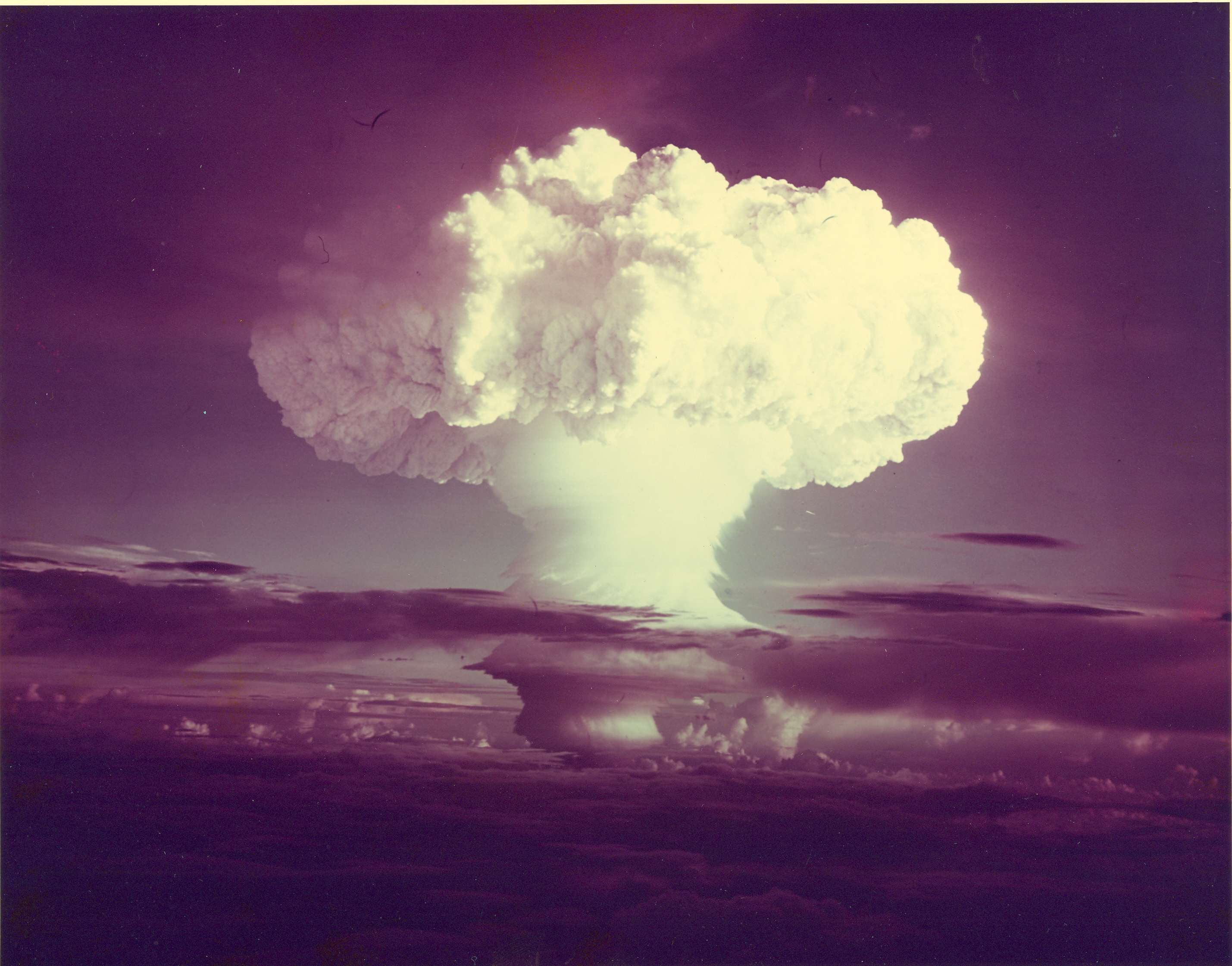Hanuman carrying the mountain
Image from Images Blog
71. Ravana's Death - Ravana was finally destroyed by a Brahma weapon. This got me thinking a lot about the weapons in the Ramayana. These empyreal weapons are known as astra. Indrajit uses a naga-weapon against Rama's army, and he receives a Brahma weapon from the Fire-god, Agni. When Hanuman was captured, it was only accomplished with a Brahma weapon. According to Wikipedia, there are three different types of Brahma weapons, the particular weapon that is used in the Ramayana is the Brahmastra. The Brahmastra is used to completely annihilate an enemy. It can only be defended against with another Brahma weapon, it never misses, and it is equated with a nuclear weapon. This leaves me wondering: How did Hanuman survive a Brahmastra, and why did it bind him instead of slaying him? Also, why did Rama wait for so long to use the Brahmastra instead of finishing the battle quickly with it?
Modern Day Brahmastra
Image from Wikipedia
73. Sita and Rama - "What man of high degree receives back a wife who hath lived long in another's house?" What? It's your fault that she was abducted Rama.
78. Valmiki's Hermitage - Rama does it again. Sita has already endured the fire to prove her purity. I don't understand why he must cast her away again. Sugriva, for whom Rama killed Vali, was banished on more rightful grounds than Sita. Could he not order a statue of Sita surviving the flames to be cast so that everyone would remember? If he really loved her, then why did he have to send her away where she raised his children alone? Maybe my modern-day western perspective clouds my vision.


What a thought-provoking diary post, Carey! Super! The idea of the Brahmastra being a sort of totalizing super-weapon like nuclear weapons today is a theme that inspired Peter Brook in making his film version of the Mahabharata, and it's a theme used VERY powerfully there, so you might want to watch that later in the semester. You can often find the film at YouTube, and if not, we have the DVD in Bizzell too!
ReplyDeletePeter Brook's Mahabharata (film)
And do you know about the Trinity Test of the atomic bomb and how Oppenheimer quoted the Bhagavad-Gita at that moment? Oppenheimer had studied Sanskrit when he was at Berkeley, and sometimes when I was working with the old Sanskrit books in the Berkeley Library, I would wonder sometimes if they were the same ones Oppenheimer had used...!
Oppenheimer: "Now I am become Death, the destroyer of worlds."
Meanwhile your question about Sita's trial is not just a modern question, not just a Western one: it is a dilemma that has afflicted Indian audiences for millennia. Some versions, like the Tamil version translated by Narayan that some people have been reading in class, just omit the last portion, pretending that it didn't exist. If you watch Nina Paley's film Sita Sings the Blues as next week's option, you'll see that she focuses in on that while leaving other parts of the story out, kind of like pressing on a wound, finding what hurts most about the story and looking for the meaning exactly there.